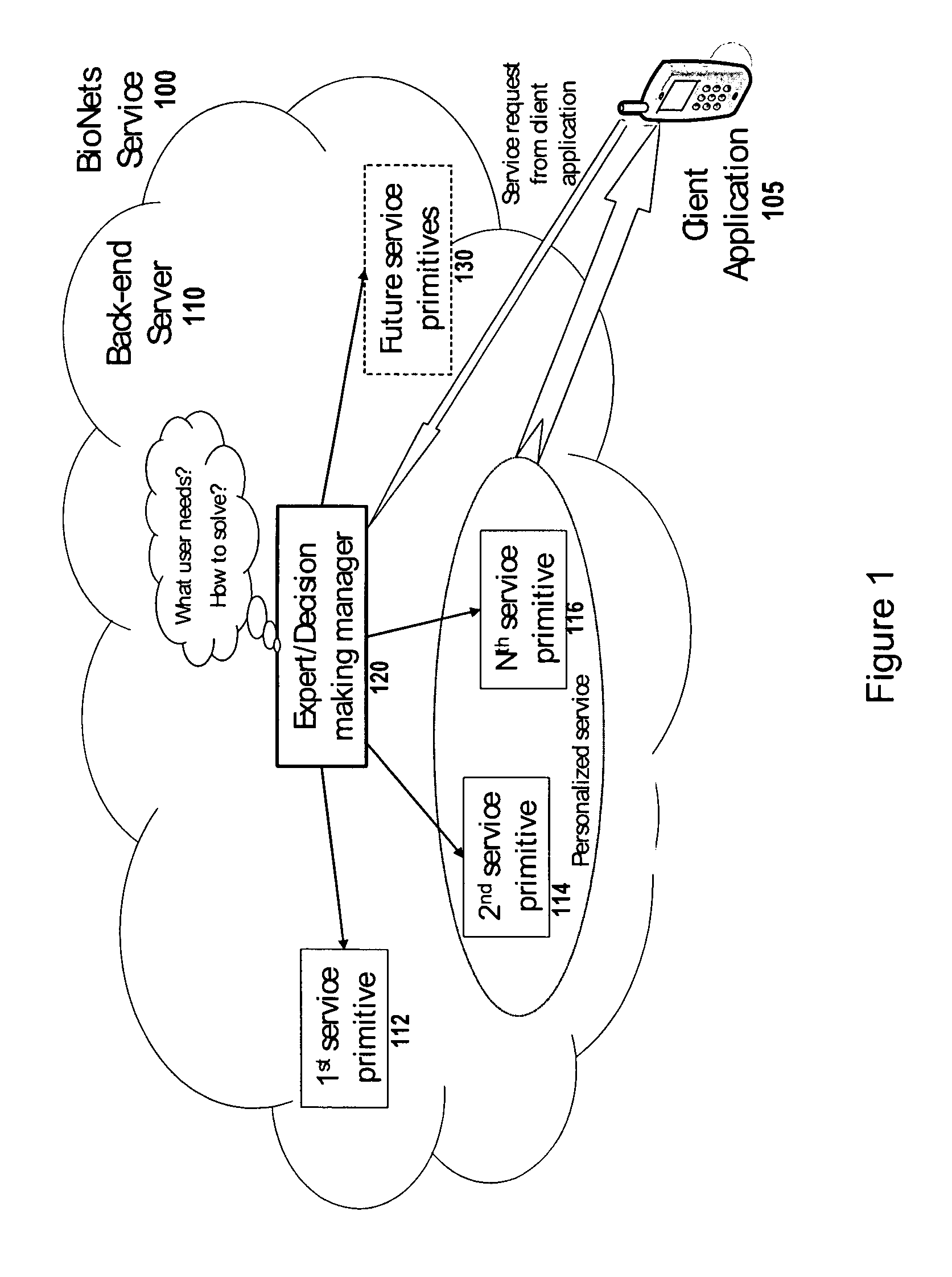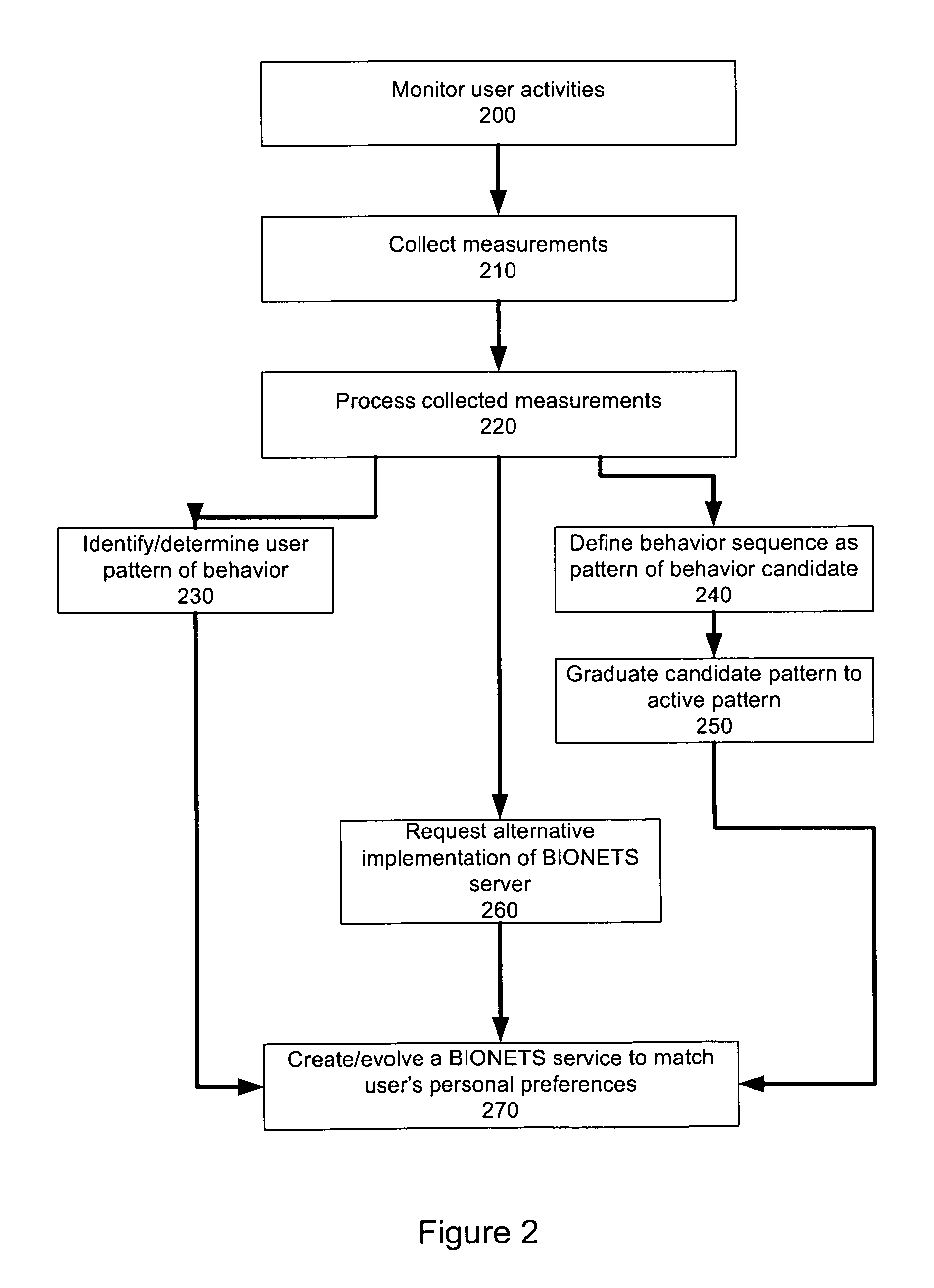Bionets architecture for building services capable of self-evolution
a bionet and self-evolution technology, applied in the direction of digital computers, instruments, selection arrangements, etc., can solve the problems of failure to meet the needs of users, service may also die out, and it is difficult to formally crystallize the problem of users in a manner that would allow for the resolution of problems, so as to facilitate sharing and utilization by other users and minimize resource consumption
- Summary
- Abstract
- Description
- Claims
- Application Information
AI Technical Summary
Benefits of technology
Problems solved by technology
Method used
Image
Examples
Embodiment Construction
[0018]Various embodiments described herein provide systems and methods of effectuating service creation / evolution and provisioning in global networks such as autonomic networks contemplated in the BIONETS environment. Furthermore, services created can be integrated with various data sources including, for example, basic Internet services and sensor (T-Nodes, and others.) data.
[0019]Additionally, various embodiments address the development of one or more flexible architectures that can support service creation / development and provisioning in addition to self-evolution. Therefore, various embodiments allow for continued self learning, customization and adjustment of BIONETS services to the needs and expectations of users in accordance with characteristics such as those exhibited by biological organisms, for example, the ability to continuously adopt itself to an ever-changing environment.
[0020]From a user-experience point-of-view, a BIONETS service architecture can be thought of as a ...
PUM
 Login to View More
Login to View More Abstract
Description
Claims
Application Information
 Login to View More
Login to View More - R&D
- Intellectual Property
- Life Sciences
- Materials
- Tech Scout
- Unparalleled Data Quality
- Higher Quality Content
- 60% Fewer Hallucinations
Browse by: Latest US Patents, China's latest patents, Technical Efficacy Thesaurus, Application Domain, Technology Topic, Popular Technical Reports.
© 2025 PatSnap. All rights reserved.Legal|Privacy policy|Modern Slavery Act Transparency Statement|Sitemap|About US| Contact US: help@patsnap.com



